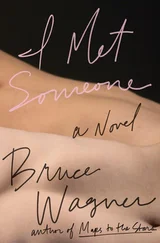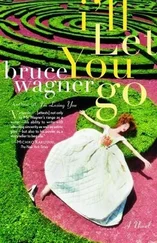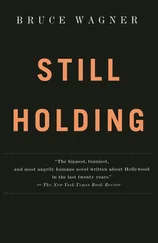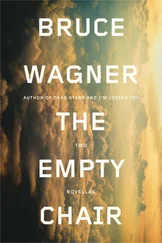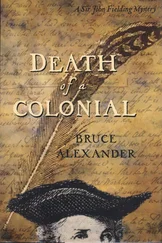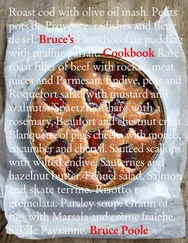The Art of Fiction, Part One
Steve
Martin had a new book out; a bad bug forced Joyce Carol Oates to cancel her interview with him at the Central Library in LA. Oates had recently compared him to Edith Wharton, and Steve was looking forward to the Q&A.
JCO was one of those writers Bud was certain he would never read yet perversely enjoyed reading about. Everyone knew she had written a thousand books; a slow reader to begin with, Bud just couldn’t see the point. Besides, he hadn’t even read all of Dickens, and Dickens was in his Top Five. (It took a full 40 years for Bud to admit to himself that he would never — never, ever — read Proust. Capote supposedly never did either.) Still, he drew ironic comfort from the Believe-it-or-Not! aspect of Ms Oates’s tsunami œuvre, & the trademark shtick pathology behind its creation. Which was somewhat of a shame (Bud thought charitably) because it wasn’t so much the books that were being reviewed anymore, as it was the Brobdingnagian output. Every writer deserved a fair shake, yet he supposed the mother of so many oaters only had herself to blame. JCO often wrote under pseudonyms; you couldn’t keep up with her nom de spew’ems either. Maybe that was sort of the whole point — staying ahead of your readers and critics. It was better than staying behind them, which is what Bud Wiggins had done.
. .
He was turning 60 this year. A screenwriter since his mid-20s, Bud had a sole “written by” to his name, a co-credit (one of four others) on a forgotten horror film of the late 80s. When he turned 55, out of desperation, Bud took an early retirement, allowing him to collect a pension of $1,140 a month. The beauty was that WGA rules allowed him to continue to work, without being penalized. In fact, any income received post -pension would automatically be applied to a second retirement, collectible when he turned 65. The problem was, he was virtually unemployable. Until he found a job, he would have to keep living with his mother in the below-Wilshire apartment he grew up in as a boy. Dolly had lived there since the divorce, practically since Kennedy was shot (when the rent was $235 a month). Her husband Morris — Bud’s father — killed himself back in ’77.
A few years ago, with the help of a therapist, Bud Wiggins arrived at the mature, painful conclusion that he lacked talent as a screenwriter. He’d been given so many chances to soar yet each time fell to earth. And now, through an uncertain alchemy, he transformed defeat into liberation — the liberation that came with admitting he was finished, done, his sojourn in the Business was over. Of late, mortality was very much on his mind. Just how did he want to spend the years he had left? He decided at last to try his hand at what he felt he’d been put on earth to do — novel writing. Bud smiled to himself at the inept timing of his strategem: fiction was becoming a dead thing before his & the world’s eyes, a faster death than anyone had imagined or been prepared for. But what could he do? You can’t fight the feeling.
It used to be a cliché that actor-waiters, CPAs and dentists were all working on screenplays; then came the old joke “… but what I really want to do is to direct.” Now it seemed that no one cared about writing scripts or directing. They only wanted to be novelists.
Novels were the new screenplays.
. .
Truman Capote was such a fan that he famously declared Joyce Carol Oates to be “a joke monster who ought to be beheaded in a public auditorium.”* Bud wasn’t as opinionated. He did like the idea of writers whose work, either paraphrased or quoted, existed only in reviews; it had a Borgesian (Bolañoesque?) ring. Maybe he’d try his hand at a short metafiction with that theme.
The halogen bulb of JCO’s industry attracted the moths of novelists manqué , old infants no longer so terrible who’d given up the ghost of authorial fame in mid-life, instead finding peace in the green-enough pastures of TLS and The London Review of Books . These gentlemen and gentle ladies inadvertently began their Sunday reviews of JCO’s latest eructation with a winking bow to her promiscuity on the page, which depending on individual temperament or even the mood of the moment, could be a swipe or a grovel.
Bud thought her ageless, gazelle-necked, bug-eyed flap photos never really did synch with the characterization of her work. (He saw her as a Victorian figure on display in the Quality Lit wing of Tussaud’s, alongside other prodigies of indefatigable overprolificity: Cartland, Simenon, Dumas, King.) He gathered from reviews read over time that Oates’s thing was ultraviolent, hypersexual Gothic. With each long novel and long short story, the writer apparently upped the ante of outlandish narrative, her new releases storming the marketplace sometimes three at a time like soccer thugs intent on breaking the skulls of the books that came before them. The complex, superheated plotlines that Bud was able to skim from reviews placed her indeed in the prinicipality of the Grand Guignol soap. It was the vexing habit of the woman’s fiercely loyal critics to provide bizarrely fussy précis of whatever book they’d been engaged to appraise — much like competing technical manual writers vying for the prize of Best Instructions in the matter of operation of delicate scientific equipment. When it came to Shakti Oates , Mother Goddess of fertility, they shared a freemason-like covenant, a moral-ethical philosophy binding them together in an erotomanic rigor of thoroughness and objectivity . The sheer meticulousness of their endeavors launched them — obliviously — into cultism. It was a hobby of Bud’s to read all of her reviews, though sometimes just finishing them was daunting, as if her prolixity had gone viral, paralyzing the very coolies vested in carrying the palanquin.
As a novelist, Bud wanted — needed — to study and profit from her example. The woman was some kind of witch. Her defamers were legion yet, in the end, through devilry, the nastiest cavils were massaged into batty, ecclesiastical pronouncements placing her squarely among the Immortals. So, aside from said carpings — the periodic hoots, hisses, graffiti, buckshot and urine-splashing afforded any writer worth their salt (cf: obsolescent belle-lettres blogsites) — the Oatress was critically bulletproof. She was a member of good standing in that country club Bud only dreamt of one day belonging, with its tenured, critically sun-kissed topnotchers: Auster, Vollman & McEwan, Cormac McC & Lorrie Moore. . though Bud did remember that JCO’s memoir of her husband’s death* got respectfully slammed in the Times Sunday Book Review (front cover, no less!), second-fiddled to The Year of Magical Thinking . Well, you can’t have everything. Anyhow, Joyce was no Joan. Joan had another book out about the death of her daughter — take that , JCO! When it came to LA freeways, fires, & losing loved ones, Didion had the lock.*
When JCO bailed, the Central Library suggested T. Coraghessan Boyle or Neil LaBute; Steve wasn’t thrilled. He rallied on learning Salman was in town to do Bill Maher, but the logistics didn’t work & Salman sadly declined. In six hours, the auditorium would be filled. The hosts were starting to sweat. Norman Lear, Carolyn See and James Franco were rejected out of hand.
Steve had just given the (tepid) thumbs-up to Arianna, when Dave Eggers returned his call.
They met in 2009, when Dave won the $100,000 TED “Wish” Prize. (Steve emceed the ceremony and later became a big supporter of 826 Valencia.) Dave said he’d loved to have done the Q&A but was home nursing a sick child. But he said he managed to get in touch with another winner of the TED award, Karen Armstrong. Karen was a former nun, a scholar of comparative religion who created the Charter for Compassion , a project that was dedicated to promoting awareness of the universality of the Golden Rule in world religions. Steve actually met Karen a few years before on Necker Island. Richard Branson invited a whole group to bat around ideas that might further the cause of reducing hate and extremism. It was a great time: Steve already knew Bono and, of course, Lou and Laurie—& Aby Rosen and his wife, the socialite psychiatrist Samantha Boardman. He’d never met Jimmy and Rosalynn Carter, or Queen Noor, who had an elegant, California girl beauty. Steve also knew Peter Gabriel, Peter Morton and Michael J. Fox (& wife Tracy) but had never met Sean Parker, who he really only knew through Justin’s neat performance in The Social Network . Steve and Oliver Sachs marveled at how they’d never met, & happened to be big fans of each other’s work, though admittedly, Dr. Sachs wasn’t entirely au courant with his new friend’s literary contributions. The actor-comedian-novelist’s biggest love connection on that Necker Island trip was Desmond Tutu. The bishop was brilliantly congenial, with sunny, elastic features and a comedian’s natural timing. There was something of the impish forest elf in him, and he smelled like an animal. He told Steve he’d retired and was “completely over the moon” about spending his days doing nothing but watching movies with his grandkids. He told him their favorite was ¡Three Amigos! and Steve chose to believe him. Why would the bishop lie about something like that?
Читать дальше


